- International edition
- Australia edition
- Europe edition
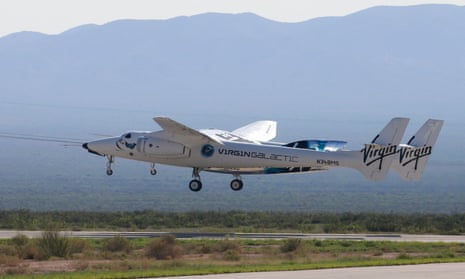

Virgin Galactic completes first commercial flight into space
Flight is milestone for space tourism venture founded by British billionaire Richard Branson, after years of setbacks
Sir Richard Branson officially entered the billionaire space tourism race on Thursday when his Virgin Galactic rocket plane, Unity, reached an altitude of about 53 miles.
Two Italian air force colonels and an aerospace engineer from the National Research Council of Italy joined a Virgin Galactic instructor and the plane’s two pilots on the 90-minute suborbital ride, which was streamed around the world.
Welcome back to Earth, #Galactic01 ! Our pilots, crew and spaceship have landed smoothly at @Spaceport_NM . pic.twitter.com/f8YQowQN2x — Virgin Galactic (@virgingalactic) June 29, 2023
At the apex of the flight, the crew experienced a few minutes of weightlessness and unfurled an Italian flag before the craft shifted into re-entry mode and glided back to the runway at Spaceport America near El Paso, Texas.
“Welcome to space, astronauts,” Sirisha Bandla, Virgin Galactic’s vice-president of government affairs and research operations, said during the live stream of the launch. The US Space Agency Nasa and the US air force both define an astronaut as anyone who has flown at an altitude of 80km (50 miles) or higher.
Virgin Galactic tweeted : “Welcome back to Earth, #Galactic01! Our pilots, crew and spaceship have landed smoothly at @Spaceport_NM.”
The flight marks a decisive moment for Virgin Galactic Holding Inc, the space tourism venture founded by Branson in 2004, as it inaugurates commercial service after several years fraught with development setbacks. It was the company’s sixth piloted sub-orbital space flight but the first to carry paying customers.
Branson’s company has sold about 800 tickets for trips on the aircraft at a cost of up to $450,000 a seat. The company plans to eventually build a large enough fleet to accommodate 400 flights annually.
Virgin is the latest billionaire-founded company to join the space tourism race, along with Jeff Bezos’s Blue Origin and Elon Musk’s SpaceX.
The potentially dangerous trip comes just days after the loss of the Titan submersible , which was taking wealthy customers to see the Titanic at the bottom on the ocean when it imploded, killing all five occupants. Such risky voyages are part of a growing trend for billionaires to spend vast sums on extreme expeditions .
The flight also comes two years after Branson himself rode along with five other Virgin Galactic personnel for the first fully crewed test spaceflight of Unity in July 2021. At the time, the company was targeting regular commercial service to begin in 2022 after additional test flights.
The mission of the Italian team was billed as scientific as well as touristic. One of the astronauts wore a special suit that measured biometric data and physiological responses. Another conducted tests using sensors to track heart rate, brain function and other metrics while in microgravity. A third experiment assessed how certain liquids and solids mix in that environment.
“This flight showcases our distinctive spaceflight system, which allows researchers to fly with their experiments, and our capacity to offer regular access to space for the science and technology community,” Bandla said.
In 2014, a pilot was killed when Virgin Galactic’s SpaceShipTwo craft crashed in the California desert.
Branson’s other space company, the satellite launch firm Virgin Orbit, announced it was closing down in May , just months after a rocket carrying the first satellites launched from British soil failed to reach orbit and was lost .
- Virgin Galactic
- Richard Branson
Most viewed
To revisit this article, visit My Profile, then View saved stories .
- Backchannel
- Newsletters
- WIRED Insider
- WIRED Consulting
Ramin Skibba
2021 Was the Year Space Tourism Opened Up. But for Whom?

In the early years of this century, executives at Virgin Galactic, founded by the irreverent Richard Branson, predicted that commercial flights to space for paying passengers were only a couple of years away. That turned out to be far too ambitious. Disaster struck the company twice in the next decade: In 2007 an explosion during pre-launch tests of SpaceShipTwo’s rocket systems killed three people. Then in 2014, a pilot was killed during a test flight when the space plane crashed in the Mojave desert.
Now, in 2021, everything looks different. On July 11, Branson and three crew members traveled to Spaceport America, Virgin Galactic’s human spaceflight headquarters in southern New Mexico, and clambered aboard VSS Unity , a much upgraded version of SpaceShipTwo. They blasted toward the edge of space , at an altitude of 54 miles above the Earth, allowing the passengers a panoramic view of the world as they excitedly floated in zero gravity for about four minutes of their hour-long journey.
Nine days later, Blue Origin’s founder, Jeff Bezos, and three others made a similar voyage aboard their New Shepard space vehicle, this time reaching an altitude of 63 miles, also staying aloft and weightless for a few minutes. And then in September, Elon Musk’s SpaceX launched the all-civilian Inspiration4 mission aboard a Crew Dragon spacecraft. They reached an orbit just above the International Space Station’s, flying for about three days before their capsule safely splashed down off the coast of Florida.
After decades of research, development, trial, error, and hype, the dream of commercial spaceflight had finally gotten off the ground. While private passengers have previously hitched rides on NASA shuttles and Russian Soyuz spacecraft, the three billionaire titans of the industry have made it possible to book a trip to space and back on a private spacecraft. With plenty more flights from these companies (and others) on the horizon, space tourism has surely arrived. In fact, the industry is now launching so many people into space that in January the FAA will end its Commercial Space Astronaut Wings program, which was originally designed to promote the industry. (The agency will continue to recognize space travelers on its website.)
“I honestly think that we are at the dawn of an incredible inflection point in history for human spaceflight. I truly believe that seeing Earth from space is transformative and will ultimately help humanity and the Earth in unknown ways,” says Beth Moses, Virgin Galactic’s chief astronaut instructor, who previously worked for NASA and who flew with Branson in July.
“Until this year, it’s predominantly been government-focused—NASA propelling astronauts to the space station. That's an achievement, but also a turning point where we’re noticing the effects of the democratization of space. You don’t need to be an astronaut to go to space,” says Danielle Bernstein, co-lead of the Aerospace Corporation’s Space Safety Institute.
But this access currently depends on the whims and largesse of a handful of billionaires. Despite some lofty rhetoric, the leaders of the industry still struggle to make the case that their rockets have more to offer than expensive trips for the rich and famous. “There’s a surface attempt to make them appear as commercial science vessels, but they’re much more like yachts or cruises,” says University of Chicago space historian Jordan Bimm.

Emily Mullin

Joel Khalili

C. Brandon Ogbunu
Others question the purpose of space tourism too. “These are technological achievements, there’s no doubt about that,” says Kathryn Denning, an anthropologist and space ethics researcher at York University in Toronto. But, she suggests, “their most significant achievement is the domination of the airwaves and television coverage.”
So far, tickets to the edge of space go for six figures—$200,000 or more—while booking an orbital expedition costs up to eight figures. A $200,000 price tag for a brief spaceflight tops the annual income of about 90 percent of Americans . It’s hard not to take note of that, especially at a time of climate crisis , a pandemic, and growing awareness of inequality. Each seat aboard a suborbital flight is like launching a home while there are more than half a million unhoused Americans, or like launching a family’s lifetime health care costs while tens of millions lack health care, or like launching college tuition when a majority of Americans don’t have access to higher education.
“Every time somebody flies for $250,000, while in that same country children aren’t eating and people are lined up along the borders, I have a hard time getting my head around it, to be honest,” Denning says.
But if the 20th-century aviation industry is any guide, while these flights will begin as luxuries, prices will drop, and access to space will broaden beyond ultra-rich people as the market opens up and technologies and infrastructure improve. “If you rewind to 100 years ago, it wasn’t your everyday person taking advantage of airlines that were just beginning to figure out how to fly routes around the world. But nowadays, for a very reasonable sum, anybody can hop on a plane, and they don’t think twice about it. It’s very safe. That’s probably the vision for space,” Bernstein says.
This also isn’t the first time that a handful of wealthy individuals have played an outsize role in US space activities. “It was actually billionaires like Andrew Carnegie and John D. Rockefeller who funded the largest astronomical telescopes in the country in the 19th and early 20th centuries. It was the Guggenheim family that was the primary source of funding for Robert Goddard, who was the first rocketry pioneer in the US,” says Alex MacDonald, chief economist at NASA.
And on the other hand, MacDonald points out, NASA has supported and invested in the burgeoning private space industry for decades, signing a variety of contracts for equipment and services, including with the once-fledgling SpaceX, which turns 20 next spring. NASA’s currently investing in Blue Origin and two other companies to develop designs for a commercial space station to follow the ISS. It’s part of a long-term plan to support the private sector in low Earth orbit, while reducing costs and freeing up more of the agency’s budget for long-distance exploration.
While the first six decades of spaceflight belonged to highly trained astronauts, now passengers can fly just for the spectacular view, or for fun, or for the challenge. And while the cost of a ticket is high, these early private flights did make room for a handful of people who would have never had the opportunity before. The commander of SpaceX’s Inspiration4 was Jared Isaacman, the billionaire CEO of the payment processing company Shift4Payments, and he funded the tickets that went to the three other travelers. Artist and scientist Sian Proctor won hers in a contest, Chris Sembroski got his ticket from a friend who won a lottery-like competition, and Hayley Arceneaux was offered her spot as an ambassador for the St. Jude Children’s Research Hospital, an organization for which the mission raised $200 million—a charitable purpose that could become a model for some other private flights. Virgin Galactic announced on November 24 that Keisha Schahaff, a health and energy coach in Antigua, won two seats in a sweepstakes that raised $1.7 million for Space for Humanity, a Denver-based nonprofit that works to expand access to space with its Citizen Astronaut Program.
Passengers on other flights seem to have been chosen for their qualities as “goodwill ambassadors” for space travel. That includes pilot Wally Funk , who was one of the all-female Mercury 13 astronaut trainees in the 1960s, but wasn’t selected for a mission because of the sexism of her era, and William Shatner, aka Star Trek ’s Captain Kirk.
What people think of as an astronaut (or as a “spaceflight participant,” to use the FAA’s term ) has always been evolving. Early space exploration involved the military, in the context of the space race and the Cold War, and the first astronauts were mostly test pilots with “the right stuff.” After the successful Apollo program and moon landing, a greater emphasis on science led to sending more scientists. “As we go through those stages, it’s not an erasure of the previous one, but a layering on over them,” Bimm says. “Look at the Inspiration4 crew: While they’re civilians, they tried hard to look both like militarized astronauts, appearing in jets and flight suits , and as scientists, with performative science as part of their mission.” The crew collected their own biomedical data during their flight , but Bimm says it’s not clear how much that data will aid research on effects of low gravity on astronaut health, for example.
One of the most-touted benefits of sending people to space has always been that it’s awe-inspiring to do, generating feelings of optimism, wonder, and international cooperation. The sight of our little planet seen from far away moves many space fliers, as well, in what’s often called the “overview effect.” It’s a rare opportunity to witness how unique the Earth is, to see it without borders and in all of its vulnerability. Virgin Galactic’s Beth Moses calls it an “indescribable and magical experience.” And Shatner, who flew on Blue Origin’s second passenger flight in October, afterward called it a “ profound ” one that he hopes he’ll never recover from.
But some people question whether spaceflight is necessary to learn this existential and cosmological lesson. “I’m sure it’s beautiful to behold,” Denning says. But, she asks, “do you actually have to go to space to have an experience like that? And the answer for many thousands of years has been no. You can have a spiritual oneness with the Earth and a rise in enviro-consciousness without that.”
Similarly, Bimm doubts that space tourism inevitably spurs people to make the world a better place. “I worry that the very wealthy are going to start going to space, claiming they had the overview effect, and come back to Earth and use that claim of a ‘transformative experience’ to do pretty much anything they want,” he says. Bezos’ dubious project to move heavy industry into space, which he touted after his jaunt in July, is a prime example, Bimm says.
He also isn’t sold on the value of taking along passengers with compelling stories, like Shatner, Funk, Proctor, and Arceneaux, who is a cancer survivor and has a prosthetic body part. It almost serves as a deflection technique, Bimm says, since it distracts attention from the wealthy, lower-profile paying customers, as well as from Bezos’ and Musk’s problems on Earth, like complaints about the treatment of workers at Amazon and Tesla .
Fred Scharmen, author of the new book Space Forces , wonders how long these good feelings will last in an era of private flight. “That kind of feeling and vibe that the public agencies are able to tap into almost effortlessly—everybody loves NASA—it’ll be interesting to keep an eye on how long the private actors can invoke or connect to that kind of feeling of goodwill, hope, and overwhelmingly sublime awe that space travel inspires,” he says.
There are already signs that the private passenger space industry is beginning to expand beyond tourism, and it’s shaving down the price of getting there. The first mission of up-and-coming Houston-based company Axiom Space, dubbed Ax-1, will deliver four crew members to the ISS in February for an eight-day stay, where they’ll conduct research experiments involving the health impacts of space. “It is a pathfinder, pioneering mission for this new era of commercial human spaceflight to the ISS and in the future to commercial space stations. The long-term goal is to open up low Earth orbit to become its own marketplace,” says Michael López-Alegría, Ax-1’s commander, Axiom’s vice president of business development, and a former NASA astronaut. He anticipates a market that includes tourism and research as well as advertising and entertainment.
Axiom has also already signed NASA contracts to develop modules to attach to the ISS, which will later detach and become their own station . Other commercial space stations will become destinations as well, for astronauts, tourists, and a variety of businesses. There’s already a market for space wine , space beer , and movies filmed in space , Denning says.
A variety of other ventures will follow. That includes teardrop-shaped space balloons the size of football fields from the company Space Perspective, based at Kennedy Space Center in Florida. “Rather than going to space at high g's on a rocket, you’re going to space very gently and comfortably at 12 miles an hour,” says Jane Poynter, the company’s co-CEO. The balloons carry a pressurized capsule and eight passengers aloft, nearly 20 miles above the Earth’s surface. They’re planning their first crewed flight in 2023 and their first commercial one the following year, with tickets going for around $125,000. It’s also a relatively safe way to fly to the edge of space, rather than strapping oneself to a rocket, Poynter points out. (Blue Origin and SpaceX use traditional vertical-launch rockets that are automated, with the crew sitting in a capsule on top, while Virgin makes use of a piloted space plane.)
As the industry matures, ideas for improving it can develop as well. Ariel Ekblaw, founder and director of the MIT Space Exploration Initiative and author of the book Into the Anthropocosmos , believes there should be more transparency in the way space fliers are chosen, because people around the world pay attention to these flights and to their crew. And Bimm argues that companies should be transparent about something else: whether the crew's flight plan is just to hang out and enjoy the spectacular view, rather than gathering scientific data.
Right now, private flights seem to encompass multiple things at once: They’re science missions, ecotourism expeditions, and yacht trips led by famous space barons. “We have yet to see what the hybrid role of these missions are,” says Ekblaw. “We’re at a cusp of a public grand opening of space.”
- 📩 The latest on tech, science, and more: Get our newsletters !
- Amazon's dark secret : It has failed to protect your data
- Humans have broken a fundamental law of the ocean
- What The Matrix got wrong about cities of the future
- The father of Web3 wants you to trust less
- Which streaming services are actually worth it?
- 👁️ Explore AI like never before with our new database
- 💻 Upgrade your work game with our Gear team’s favorite laptops , keyboards , typing alternatives , and noise-canceling headphones

Jessica Rawnsley

Maggie Chen

Rachel Lance

Maanvi Singh

Amit Katwala

David Kushner

Virgin Galactic ready to begin commercial flights to space this summer

The dawn of space tourism may be fast approaching as billionaire Richard Branson's company Virgin Galactic is preparing to make its first commercial flight to the final frontier by the end of June.
With a four-day launch window beginning June 27, the space tourism company will take a crew of three specialists with the Italian Air Force and the National Research Centre of Italy to conduct microgravity research on the edges of space. Commercial space flights for ticket holders will then begin in August and continue monthly, the company announced Thursday .
"This next exciting chapter for Virgin Galactic has been driven by innovation, determination and a commitment to delivering an unparalleled and truly transformative customer experience," Virgin Galactic CEO Michael Colglazier said in a statement.
Asteroid tracker: NASA said asteroid the size of the Brooklyn Bridge passed near Earth on Thursday
Virgin Galactic completed its final test flight last month
It's been a long road for the company to reach a point where it says it's able to now take paying customers on brief trips to space.
In 2021, the Federal Aviation Administration grounded Virgin Galactic to investigate a July 11 space flight amid concerns that it deviated off-course with Branson on board.
Two years later, Virgin Galactic completed its final test flight , known as the Unity 25 mission May 25, landing at Spaceport America in southern New Mexico after a short flight to space that included a few minutes of weightlessness. In a mission that lasted a little more than an hour, the mother ship carried the spaceplane to an altitude of 44,500 feet, where it reached an altitude of 54.2 miles before gliding back down to the runway, according to the company .
Space exploration: NASA's Psyche mission on track for fall launch to metallic asteroid after yearlong delay
Virgin Galactic flight prices aren't cheap
Reserving your seat with Virgin Galactic for a 90-minute ride to space isn't cheap. Tickets went on sale to about 1,000 customers last February at a whopping $450,000 a pop, USA TODAY previously reported .
But not to fear: For the many people confined to Earth's gravitational pull, the company will offer livestreams of both its initial missions on its website, virgingalactic.com
Virgin Galactic and Blue Origin are in a space race
Virgin Galactic's announcement comes about a month after billionaire Jeff Bezos' Blue Origin was selected as the second provider for lunar lander services for NASA's Artemis program and was awarded a $3.4 billion contract.
The company, owned and personally funded by Bezos , the founder of Amazon , has been in a heated space race for years with Branson's company. It's New Shepard rocket developed for space tourism was expected to return to flight by the end of 2023 after the vehicle suffered a mid-flight failure in September .
Launch failure: Blue Origin's New Shepard crashes in Texas
Eric Lagatta covers breaking and trending news for USA TODAY. Reach him at [email protected] and follow him on Twitter @EricLagatta.

- Entertainment
- Rex Reed Reviews
- Awards Shows
- Climate Change
- Restaurants
- Gift Guides
- Business of Art
- Nightlife & Dining
- About Observer
- Advertise With Us
Every Space Tourism Package Available in 2021 Ranked: From $125K to $60 Million
From virgin galactic's suborbital ride to spacex's multi-day orbital voyage, we've rounded up every space tourism package available..

2021 is a historic year for commercial space travel. A record number of civilian orbital and suborbital missions launched successfully: Elon Musk ’s SpaceX launched four amateur astronauts into Earth’s orbit for the first time; a Russian film crew spent 12 days on the International Space Station shooting the world’s first movie in space; and two multi-billionaires flew to the edge of Earth’s atmosphere as the first passengers of their respective space companies to show the public that their new spacecrafts are safe and fun.
Sign Up For Our Daily Newsletter
Thank you for signing up!
By clicking submit, you agree to our <a rel="nofollow noreferer" href="http://observermedia.com/terms">terms of service</a> and acknowledge we may use your information to send you emails, product samples, and promotions on this website and other properties. You can opt out anytime.
As with everything in its early stages, space tourism today is unattainably expensive (although demand appears to be strong enough to keep existing companies in this market busy for several years). But eventually, as technology matures and more companies enter the industry, prices will hopefully go down. As a space tourism entrepreneur told Observer this summer, going to space in the future “will be more and more like going to Europe.”
Below, we’ve rounded up every space tourism package that is either available now or in the near future. We have listed them in the order of price and compared them by travel duration, maximum altitude, passenger cabin amenities, and value for money—if you can afford it, that is.
Space Perspective: “Hot Air Balloon” to Stratosphere
Price: $125,000 Flight altitude: 30 kilometers What you’ll get: A relaxing six-hour ride to the stratosphere in a balloon-borne pressurized capsule. Date available: 2024 Value for money: ★★★★ (4/5 stars)

Founded by the team that launched Alan Eustace in 2014 for his Guinness World Record space jump , Florida-based Space Perspective in June began selling tickets of its yet-to-be-licensed “Spaceship Neptune” flights.
A pressurized capsule designed to carry up to eight passengers and one pilot will be slowly lifted by a hydrogen-filled balloon the size of a football field when fully inflated to 19 miles (30 kilometers) in the sky, about three times the altitude of commercial planes. The passenger cabin features a bar, a bathroom and huge windows specially designed for sightseeing.
The balloon will hover at its peak altitude for about two hours before slowly descending to a splashdown in the Atlantic Ocean, where passengers and will be picked up by a recovery ship.
Because the space balloon moves at only 12 miles per hour during ascent and descent, no special training is required before the ride. Space Perspective completed a test flight in June. The company expects to begin flying paying customers before the end of 2024.
Virgin Galactic: Suborbital Joy Ride
Ticket Price: $450,000 Flight altitude: 50 km What you’ll get: A 90-minute ride to 50 kilometers above sea level in a SpaceShipTwo spaceplane. A few minutes of zero-gravity experience during descent. Date available: Now Value for money: ★★ (2/5 stars)

If you like a more thrilling space experience provided by a company with a little bit of a track record, Virgin Galactic (SPCE) ’s 90-minute suborbital flight might be your choice.
In July, the company’s founder, Richard Branson , became its first passenger and flew to the edge of Earth’s atmosphere in a VSS Unity SpaceShipTwo spaceplane along with two pilots and three Virgin Galactic employees.
A pioneer in the nascent space tourism industry, Virgin Galactic began selling seats in 2013 at $250,000 apiece. By the time it halted sales in 2014 (after a test flight failure), the company had collected deposits from more than 600 aspiring customers. Ticket sales resumed in August this year at a higher price of $450,000. Virgin Galactic said it has since received 100 reservations.
Each VSS Unity SpaceShipTwo can carry up to four passengers. Virgin Galactic expects to fly paying passengers three times a month in 2023. At its current reservation volume, it will take the company a number of years to clear its wait list. So, patience is your friend here.
Blue Origin: Quick Rocket Trip to the Kármán line
Ticket Price: Reportedly $28 million Flight altitude: 100 km What you’ll get: A 12-minute ride to the Kármán line, the internationally recognized boundary between Earth’s atmosphere and outer space. Date available: Now Value for money: ★ (1/5 stars)

Blue Origin offers a similar suborbital flight package to Virgin Galactic’s. The main difference is that Virgin flies passengers in a plane while Blue Origin launches amateur astronauts in a real rocket.
On July 20, a few days after Branson’s spaceflight, Jeff Bezos became the first customer of his own space company as well, blasting off to 107 kilometers in the sky in a New Shepard booster-capsule combo. The same spacecraft launched another crew of four passengers, including Star Trek actor William Shatner , on October 13.
Blue Origin began taking reservations in May. The exact ticket price is still a mystery. Bezos has said Blue Origin will price New Shepard flights similarly to its competitors, which led us to speculate that it would likely fall in the range of what Virgin Galactic charges. But, according to Tom Hanks , the ride would cost $28 million, which he said was the reason he turned down Bezos’ invitation to fly on the October mission. Hanks may have been joking, but $28 million was how much an auction winner paid to fly alongside Bezos in July. Of that total, $19 million was donated to various space organizations, Blue Origin said. If the remaining amount went to the company itself, it was still a hefty $9 million.
Blue Origin said it has raked in $100 million from private clients, but refused to disclose how many tickets have been sold.
SpaceX: Multi-Day Orbital Voyage
Ticket Price: Estimated $55 million Flight altitude: 574 km Date available: Now What you’ll get: Three-day stay inside SpaceX’s Dragon capsule circling around Earth with three crew mates. Value for money: ★★★ (3/5 stars)

SpaceX has more experience launching humans into space than any other company in this roundup. Its civilian package, rightfully the most expensive of the bunch, provides the closest experience to true space exploration.
In September, four amateur astronauts blasted off into space in a modified SpaceX Dragon capsule, equipped with a 360-degree glass dome, and spent three days flying in Earth’s orbit. The crewed spacecraft shot up to an altitude of 357 miles, about 100 miles higher than the average orbital altitude of the International Space Station.
The trip was paid for by tech billionaire Jared Isaacman, who was also one of the passengers. SpaceX didn’t disclose the exact amount he paid. It was estimated in the $200 million ballpark, given that NASA pays about $55 million for each seat on SpaceX’s regular crewed missions to the ISS.
Axiom Space/SpaceX: Vacation on International Space Station
Ticket Price: $55 million Flight altitude: 408 km Date available: 2022 What you’ll get: A 10-day trip to the International Space Station, including a weeklong stay in the orbital lab. Value for money: ★★★★★ (5/5 stars)

Next year, another four-person, all-civilian mission is expected to launch with a SpaceX Dragon capsule, this time to actually dock at the International Space Station and let the crew live in the orbital lab for a week. (The Inspiration4 mission stayed in orbit only.)
The trip is marketed by Houston-based Axiom Space , a company led by former NASA official Michael Suffredini. Dubbed Ax-1, the mission will be piloted by former NASA astronaut Michael López-Alegría. Three passengers—Larry Connor, Mark Pathy and Eytan Stibbe—have reportedly paid $55 million each for the remaining seats.
Axiom has three more flights planned in 2022 and 2023. Under NASA’s low Earth orbit commercialization policy, two ISS civilian missions no longer than 30 days are allowed per year. Axiom actually aims to eventually build a stand-alone space station to replace the aging ISS. The first major module is expected to launch in 2024.
Roscosmos: Customized Trip to International Space Station
Ticket Price: $50 million to $60 million Flight altitude: 408 km Date available: Now What you’ll get: A 12-day trip to the International Space Station. Value for money: ★★★★★ (5/5 stars)

If you don’t feel like buying your first space trip from an inexperienced private company, Russia’s national space agency Roscosmos has a ISS getaway package very similar to what Axiom and SpaceX have to offer.
In October, Roscosmos sent an actress and a director to the ISS for a 12-day trip to shoot scenes for what will be the first movie filmed in space. On December 8, another civilian, Japanese billionaire Yusaku Maezawa, known for having booked a SpaceX Starship flight around the moon in 2023, will travel to the ISS in a Russian Soyuz MS-20 spacecraft, set to launch from the Baikonur Cosmodrome in Kazakhstan.
Maezawa will fly with his assistant, Yozo Hirano, and Russian cosmonaut Alexander Misurkin. According to Space Adventures , a Virginia-based company currently working with Roscosmos on future commercial flights, a seat on an ISS-bound Soyuz spacecraft will cost in the range of $50 million to $60 million.

- SEE ALSO : FCC Chair Jessica Rosenworcel Supports TikTok Ban, Calls Lack of Oversight ‘Stunning’
We noticed you're using an ad blocker.
We get it: you like to have control of your own internet experience. But advertising revenue helps support our journalism. To read our full stories, please turn off your ad blocker. We'd really appreciate it.
How Do I Whitelist Observer?
Below are steps you can take in order to whitelist Observer.com on your browser:
For Adblock:
Click the AdBlock button on your browser and select Don't run on pages on this domain .
For Adblock Plus on Google Chrome:
Click the AdBlock Plus button on your browser and select Enabled on this site.
For Adblock Plus on Firefox:
Click the AdBlock Plus button on your browser and select Disable on Observer.com.

Suggested Searches
- Climate Change
- Expedition 64
- Mars perseverance
- SpaceX Crew-2
- International Space Station
- View All Topics A-Z
Humans in Space
Earth & climate, the solar system, the universe, aeronautics, learning resources, news & events.

Join NASA in Celebrating Earth Day 2024 by Sharing a #GlobalSelfie

NASA Selects New Aircraft-Driven Studies of Earth and Climate Change

The Ocean Touches Everything: Celebrate Earth Day with NASA
- Search All NASA Missions
- A to Z List of Missions
- Upcoming Launches and Landings
- Spaceships and Rockets
- Communicating with Missions
- James Webb Space Telescope
- Hubble Space Telescope
- Why Go to Space
- Astronauts Home
- Commercial Space
- Destinations
- Living in Space
- Explore Earth Science
- Earth, Our Planet
- Earth Science in Action
- Earth Multimedia
- Earth Science Researchers
- Pluto & Dwarf Planets
- Asteroids, Comets & Meteors
- The Kuiper Belt
- The Oort Cloud
- Skywatching
- The Search for Life in the Universe
- Black Holes
- The Big Bang
- Dark Energy & Dark Matter
- Earth Science
- Planetary Science
- Astrophysics & Space Science
- The Sun & Heliophysics
- Biological & Physical Sciences
- Lunar Science
- Citizen Science
- Astromaterials
- Aeronautics Research
- Human Space Travel Research
- Science in the Air
- NASA Aircraft
- Flight Innovation
- Supersonic Flight
- Air Traffic Solutions
- Green Aviation Tech
- Drones & You
- Technology Transfer & Spinoffs
- Space Travel Technology
- Technology Living in Space
- Manufacturing and Materials
- Science Instruments
- For Kids and Students
- For Educators
- For Colleges and Universities
- For Professionals
- Science for Everyone
- Requests for Exhibits, Artifacts, or Speakers
- STEM Engagement at NASA
- NASA's Impacts
- Centers and Facilities
- Directorates
- Organizations
- People of NASA
- Internships
- Our History
- Doing Business with NASA
- Get Involved
- Aeronáutica
- Ciencias Terrestres
- Sistema Solar
- All NASA News
- Video Series on NASA+
- Newsletters
- Social Media
- Media Resources
- Upcoming Launches & Landings
- Virtual Events
- Sounds and Ringtones
- Interactives
- STEM Multimedia

Work Underway on Large Cargo Landers for NASA’s Artemis Moon Missions

Mars Science Laboratory: Curiosity Rover

NASA Open Science Initiative Expands OpenET Across Amazon Basin

NASA Motion Sickness Study Volunteers Needed!

Students Celebrate Rockets, Environment at NASA’s Kennedy Space Center

AI for Earth: How NASA’s Artificial Intelligence and Open Science Efforts Combat Climate Change

Sols 4159-4160: A Fully Loaded First Sol

NASA’s Juno Gives Aerial Views of Mountain, Lava Lake on Io

Hubble Captures a Bright Galactic and Stellar Duo

NASA’s TESS Returns to Science Operations

Astronauts To Patch Up NASA’s NICER Telescope

Hubble Goes Hunting for Small Main Belt Asteroids

NASA’s Near Space Network Enables PACE Climate Mission to ‘Phone Home’

NASA Photographer Honored for Thrilling Inverted In-Flight Image

NASA Langley Team to Study Weather During Eclipse Using Uncrewed Vehicles

ARMD Solicitations

Amendment 10: B.9 Heliophysics Low-Cost Access to Space Final Text and Proposal Due Date.

Tech Today: Taking Earth’s Pulse with NASA Satellites
Earth Day 2024: Posters and Virtual Backgrounds

NASA Names Finalists of the Power to Explore Challenge

Diez maneras en que los estudiantes pueden prepararse para ser astronautas

Astronauta de la NASA Marcos Berríos

Resultados científicos revolucionarios en la estación espacial de 2023
Nasa selects companies to develop commercial destinations in space.

NASA has signed agreements with three U.S. companies to develop designs of space stations and other commercial destinations in space. The agreements are part of the agency’s efforts to enable a robust, American-led commercial economy in low-Earth orbit.
The total estimated award amount for all three funded Space Act Agreements is $415.6 million. The companies that received awards are:
- Blue Origin of Kent, Washington, for $130 million
- Nanoracks LLC, of Houston for $160 million
- Northrop Grumman Systems Corporation of Dulles, Virginia, for $125.6 million
NASA seeks to maintain an uninterrupted U.S. presence in low-Earth orbit by transitioning from the International Space Station to other platforms. These awards will stimulate U.S. private sector development of commercial, independent space stations that will be available to both government and private-sector customers.
“Building on our successful initiatives to partner with private industry to deliver cargo, and now our NASA astronauts, to the International Space Station, NASA is once again leading the way to commercialize space activities,” said NASA Administrator Bill Nelson. “With commercial companies now providing transportation to low-Earth orbit in place, we are partnering with U.S. companies to develop the space destinations where people can visit, live, and work, enabling NASA to continue forging a path in space for the benefit of humanity while fostering commercial activity in space.”
Representatives from NASA and the selected companies will host a teleconference today, Dec. 2, at 5 p.m. EST. Media wishing to participate in the call must RSVP to Josh Finch via email at: [email protected] by 4:30 p.m. EST.
The audio will stream live at:
https://www.nasa.gov/live
Participants include:
- Phil McAlister, director, commercial spaceflight, NASA Headquarters in Washington
- Angela Hart, manager, of NASA’s commercial low-Earth orbit development program at NASA’s Johnson Space Center in Houston
- Brent Sherwood, senior vice president of advanced development programs, Blue Origin, and Dr. Janet Kavandi, former NASA astronaut and Sierra Space president
- Jeffrey Manber, president of international and space stations for Voyager Space and chairman of the board at Nanoracks
- Rick Mastracchio, director of business development for human exploration, Northrop Grumman
The awards are the first in a two-phase approach to ensure a seamless transition of activity from the International Space Station to commercial destinations. During this first phase, private industry, in coordination with NASA, will formulate and design commercial low-Earth orbit destination capabilities suitable for potential government and private sector needs. The first phase is expected to continue through 2025.
Blue Origin and Sierra Space have partnered to develop Orbital Reef, a commercially owned and operated space station to be built in low-Earth orbit, which will start operating in the second half of this decade. Orbital Reef teammates include Boeing, Redwire Space, Genesis Engineering, and Arizona State University. Orbital Reef’s human-centered space architecture is designed to be a “mixed-use space business park” that provides essential infrastructure needed to support all types of human spaceflight activity in low-Earth orbit and can be scaled to serve new markets.
The station’s shared infrastructure will support the proprietary needs of diverse U.S. and international users, tenants, and visitors, including those representing research, industry, government, and the commercial sector. Features such as reusable space transportation and advanced automation can minimize cost and complexity to enable the widest range of users. Accommodations, vehicle docking ports, and utilities can all be scaled with growth in market demand.
Nanoracks’ commercial low-Earth orbit destination, in collaboration with Voyager Space and Lockheed Martin, is called “Starlab.” Starlab is targeted for launch in 2027 on a single flight as a continuously crewed, commercial space station dedicated to conducting advanced research, fostering commercial industrial activity, and ensuring continued U.S. presence and leadership in low-Earth orbit. Starlab is designed for four astronauts and will have power, volume, and a payload capability equivalent to the International Space Station.
Starlab will host the George Washington Carver Science Park featuring four main operational departments – a biology lab, plant habitation lab, physical science and materials research lab, and an open workbench area – to meet the needs of researchers and commercial customers for commercial space activities. The station will be built with flexible growth in mind, featuring interfaces both internal and external to the spacecraft to allow Nanoracks to expand the architecture as new demand sources are identified, and new markets emerge.
Northrop Grumman’s design for a modular, commercial destination in low-Earth orbit is built on decades of experience supporting NASA, defense, and commercial programs. The design leverages flight-proven elements, such as the Cygnus spacecraft that provides cargo delivery to the International Space Station, to provide a base module for extended capabilities including science, tourism, industrial experimentation, and the building of infrastructure beyond initial design.
Multiple docking ports will allow future expansion to support crew analog habitats, laboratories, crew airlocks, and facilities capable of artificial gravity, in support of multiple customers. This Space Act Agreement will enable Northrop Grumman to provide a detailed commercialization, operations, and capabilities plan, as well as space station requirements, mission success criteria, risk assessments, key technical and market analysis requirements, and preliminary design activities. Northrop Grumman’s team includes Dynetics, with other partners to be announced.
For the second phase of NASA’s approach to a transition toward commercial low-Earth orbit destinations, the agency intends to certify for NASA crew member use commercial low-Earth orbit destinations from these and potential other entrants, and ultimately, purchase services from destination providers for crew to use when available. This strategy will provide services the government needs at a lower cost, enabling NASA to focus on its Artemis missions to the Moon and on to Mars while continuing to use low-Earth orbit as a training and proving ground.
NASA estimates the agency’s future needs in low-Earth orbit will require continuous accommodations and training for at least two crew members, as well as the ability to support a national orbiting laboratory and the performance of approximately 200 investigations annually to support human research, technology demonstrations, biological and physical science.
Developing commercial destinations in low-Earth orbit is part of NASA’s broader efforts to build a robust low-Earth orbit economy, including supporting commercial activity and enabling the first private astronaut mission to the space station. In addition to these new awards NASA selected Axiom Space in January 2020 to design and develop commercial modules to attach to the station. NASA and Axiom recently completed the preliminary design review of two modules as well as the critical design review of the module’s primary structure.
By transitioning to a model where commercial industry owns and operates the assets in low-Earth orbit and where NASA is one of many customers, the agency can save on costs to live and work in low-Earth orbit and focus on pushing innovation and exploration of the Moon and Mars through NASA’s Artemis missions.
Find more information about NASA’s efforts to bolster a low-Earth orbit economy at:
https://www.nasa.gov/leo-economy
Stephanie Schierholz Headquarters, Washington 202-358-1100 [email protected]
Gary Jordan Johnson Space Center, Houston 281-483-5111 [email protected]
- SUGGESTED TOPICS
- The Magazine
- Newsletters
- Managing Yourself
- Managing Teams
- Work-life Balance
- The Big Idea
- Data & Visuals
- Reading Lists
- Case Selections
- HBR Learning
- Topic Feeds
- Account Settings
- Email Preferences

The Commercial Space Age Is Here
- Matthew Weinzierl
- Mehak Sarang

In May of 2020, SpaceX made history as the first private company to send humans into space. This marks not only a tremendous technological achievement, but also the first indication that an entirely new “space-for-space” industry — that is, goods and services designed to supply space-bound customers — could be close at hand. In the first stage of this burgeoning economy, private companies must sell to NASA and other government customers, since today, those organizations are the only source of in-space demand. But as SpaceX has demonstrated, private companies now have not just the desire, but also the ability to send people into space. And once we have private citizens in space, SpaceX and other companies will be poised to supply the demand they’ve created, creating a market that could dwarf the current government-led space industry (and eventually, the entire terrestrial economy as well). It’s a huge opportunity — now our task is simply to seize it.
Private space travel is just the beginning.
There’s no shortage of hype surrounding the commercial space industry. But while tech leaders promise us moon bases and settlements on Mars, the space economy has thus far remained distinctly local — at least in a cosmic sense. Last year, however, we crossed an important threshold: For the first time in human history, humans accessed space via a vehicle built and owned not by any government, but by a private corporation with its sights set on affordable space settlement . It was the first significant step towards building an economy both in space and for space. The implications — for business, policy, and society at large — are hard to overstate.
- MW Matthew Weinzierl is the Joseph and Jacqueline Elbling Professor of Business Administration at Harvard Business School and a research associate at the National Bureau of Economic Research. His teaching and research focus on the design of economic policy and the economics and business of space.
- MS Mehak Sarang is a Research Associate at Harvard Business School and the Lunar Exploration Projects Lead for the MIT Space Exploration Initiative.
Partner Center
Space Tourism: Can A Civilian Go To Space?

2021 has been a busy year for private space tourism: overall, more than 15 civilians took a trip to space during this year. In this article, you will learn more about the space tourism industry, its history, and the companies that are most likely to make you a space tourist.
What is space tourism?
Brief history of space tourism, space tourism companies, orbital and suborbital space flights, how much does it cost for a person to go to space, is space tourism worth it, can i become a space tourist, why is space tourism bad for the environment.
Space tourism is human space travel for recreational or leisure purposes . It’s divided into different types, including orbital, suborbital, and lunar space tourism.
However, there are broader definitions for space tourism. According to the Space Tourism Guide , space tourism is a commercial activity related to space that includes going to space as a tourist, watching a rocket launch, going stargazing, or traveling to a space-focused destination.
The first space tourist was Dennis Tito, an American multimillionaire, who spent nearly eight days onboard the International Space Station in April 2001. This trip cost him $20 million and made Tito the first private citizen who purchased his space ticket. Over the next eight years, six more private citizens followed Tito to the International Space Station to become space tourists.
As space tourism became a real thing, dozens of companies entered this industry hoping to capitalize on renewed public interest in space, including Blue Origin in 2000 and Virgin Galactic in 2004. In the 2000s, space tourists were limited to launches aboard Russian Soyuz aircraft and only could go to the ISS. However, everything changed when the other players started to grow up on the market. There are now a variety of destinations and companies for travels to space.
There are now six major space companies that are arranging or planning to arrange touristic flights to space:
- Virgin Galactic;
- Blue Origin;
- Axiom Space;
- Space Perspective.
While the first two are focused on suborbital flights, Axiom and Boeing are working on orbital missions. SpaceX, in its turn, is prioritizing lunar tourism in the future. For now, Elon Musk’s company has allowed its Crew Dragon spacecraft to be chartered for orbital flights, as it happened with the Inspiration4 3-day mission . Space Perspective is developing a different balloon-based system to carry customers to the stratosphere and is planning to start its commercial flights in 2024.
Orbital and suborbital flights are very different. Taking an orbital flight means staying in orbit; in other words, going around the planet continually at a very high speed to not fall back to the Earth. Such a trip takes several days, even a week or more. A suborbital flight in its turn is more like a space hop — you blast off, make a huge arc, and eventually fall back to the Earth, never making it into orbit. A flight duration, in this case, ranges from 2 to 3 hours.
Here is an example: a spaceflight takes you to an altitude of 100 km above the Earth. To enter into orbit — make an orbital flight — you would have to gain a speed of about 28,000 km per hour (17,400 mph) or more. But to reach the given altitude and fall back to the Earth — make a suborbital flight — you would have to fly at only 6,000 km per hour (3,700 mph). This flight takes less energy, less fuel; therefore, it is less expensive.
- Virgin Galactic: $250,000 for a 2-hour suborbital flight at an altitude of 80 km;
- Blue Origin: approximately $300,000 for 12 minutes suborbital flight at an altitude of 100 km;
- Axiom Space: $55 million for a 10-day orbital flight;
- Space Perspective: $125,000 for a 6-hour flight to the edge of space (32 km above the Earth).
The price depends, but remember that suborbital space flights are always cheaper.
What exactly do you expect from a journey to space? Besides the awesome impressions, here is what you can experience during such a trip:
- Weightlessness . Keep in mind that during a suborbital flight you’ll get only a couple of minutes in weightlessness, but it will be truly fascinating .
- Space sickness . The symptoms include cold sweating, malaise, loss of appetite, nausea, fatigue, and vomiting. Even experienced astronauts are not immune from it!
- G-force . 1G is the acceleration we feel due to the force of gravity; a usual g-force astronauts experience during a rocket launch is around 3gs. To understand how a g-force influences people , watch this video.
For now, the most significant barrier for space tourism is price. But air travel was also once expensive; a one-way ticket cost more than half the price of a new car . Most likely, the price for space travel will reduce overtime as well. For now, you need to be either quite wealthy or win in a competition, as did Sian Proctor, a member of Inspiration4 mission . But before spending thousands of dollars on space travel, here is one more fact you might want to consider.
Rocket launches are harmful to the environment in general. During the burning of rocket fuels, rocket engines release harmful gases and soot particles (also known as black carbon) into the upper atmosphere, resulting in ozone depletion. Think about this: in 2018 black-carbon-producing rockets emitted about the same amount of black carbon as the global aviation industry emits annually.
However, not all space companies use black carbon for fuel. Blue Origin’s New Shepard rocket has a liquid hydrogen-fuelled engine: hydrogen doesn’t emit carbon but simply turns into water vapor when burning.
The main reason why space tourism could be harmful to the environment is its potential popularity. With the rising amount of rocket launches the carbon footprint will only increase — Virgin Galactic alone aims to launch 400 of these flights annually. Meanwhile, the soot released by 1,000 space tourism flights could warm Antarctica by nearly 1°C !
Would you want to become a space tourist? Let us know your opinion on social media and share the article with your friends, if you enjoyed it! Also, the Best Mobile App Awards 2021 is going on right now, and we would very much appreciate it if you would vote for our Sky Tonight app . Simply tap "Vote for this app" in the upper part of the screen. No registration is required!
We have completed maintenance on Astronomy.com and action may be required on your account. Learn More

- Login/Register
- Solar System
- Exotic Objects
- Upcoming Events
- Deep-Sky Objects
- Observing Basics
- Telescopes and Equipment
- Astrophotography
- Space Exploration
- Human Spaceflight
- Robotic Spaceflight
- The Magazine
Six ways to buy a ticket to space in 2021
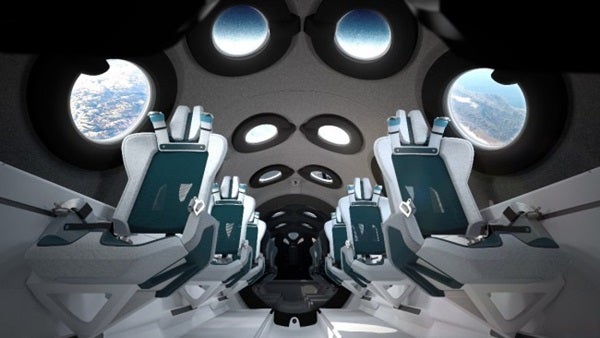
Earlier this month, SpaceX’s Crew Dragon capsule safely ferried NASA astronauts Doug Hurley and Robert Behnken back to Earth following a multi-month trip to the International Space Station (ISS). No privately built spacecraft had ever carried humans into orbit before. But unlike SpaceShipOne, which was a single craft built specifically to win a prize, there are multiple models of the Crew Dragon, each designed to be reused.
It’s finally looking like the exciting era of space tourism is about to erupt. A handful of so-called “new space” companies are now competing to sell space tourists trips on private spacecraft. Each one has a slightly different means of reaching space, and not all of them will get you all the way into orbit. But as long as you’re rich, you should have no problem purchasing your ticket to space.
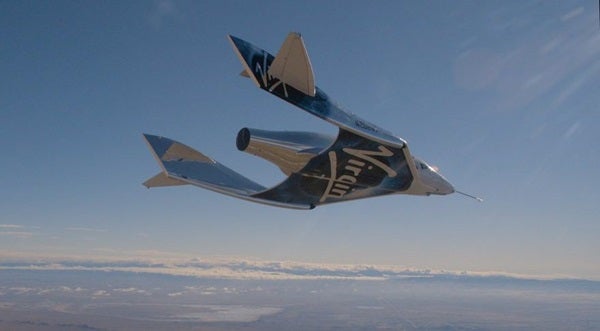
Virgin Galactic
SpaceShipOne was retired after just three successful spaceflights, but the technology lives on in Virgin Galactic’s Spaceship Unity . Like its predecessor, Virgin Galactic’s rocketplane drops from a specially engineered aircraft before boosting itself to 50 miles (80 kilometers) in altitude. That’s high enough for Virgin Galactic’s pilots to earn their astronaut badges. However, others define space via the so-called Kármán line, the generally accepted boundary between Earth’s atmosphere and space that sits 62 miles (100 kilometers) above our planet’s surface.
Virgin Galactic’s goal is to become “the world’s first commercial spaceline,” and eventually they’ll offer regular flights from Spaceport America in southern New Mexico. The company is planning to begin regular flights in early 2021, with CEO Richard Branson slated as the first non-professional pilot to travel on Spaceship Unity .
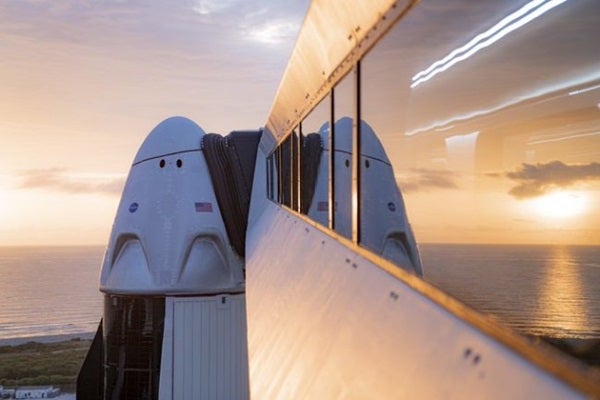
SpaceX is the only private rocket company to ever send a human into orbit. They’re also the only company now NASA-certified to send people to circle Earth. So, when will SpaceX start selling tickets to private citizens for trips to space? In the past, Elon Musk has said that the spacecraft could have a bright future carrying private passengers into orbit. And SpaceX recently announced that it has already sold seats on future Crew Dragon flights through other companies that are handling the logistics.
Ultimately though, Musk’s goal is to settle Mars. And to do that, he needs a bigger spacecraft. That’s why SpaceX’s engineers are working feverishly on its Starship, which is still under development. If the enormous spaceship works, it could literally rocket dozens of space tourists at a time between a number of destinations on Earth, or perhaps throughout the inner solar system. The company says that Starship would be able to travel between any two locations on Earth in less than one hour.
SpaceX is confident enough in their vessel that they already sold a Starship flight around the Moon to Japanese billionaire Yusaku Maezawa. No human has traveled to the Moon in nearly 50 years, and Maezawa, a fashion designer and online clothing retailer, has said he’ll take a group of artists with him.
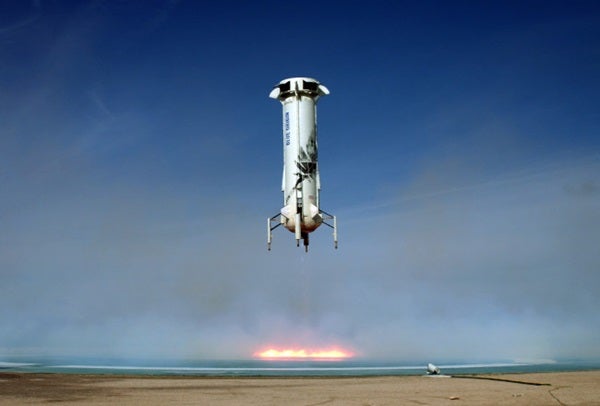
Blue Origin
Jeff Bezos started his rocket company, Blue Origin, back in 2000. And he’s been selling Amazon stock to pump billions of dollars into the effort ever since. Like SpaceX, they’re prioritizing reusable rockets and spacecraft that can drastically reduce the cost associated with spaceflight.
Much of Blue Origin’s effort has gone into developing a pair of rockets: New Shepard and New Glenn.
New Shepard can carry six people inside a suborbital capsule some 60 miles (100 km) into space. Blue Origin has already flown a dozen test flights, and they’re still planning several additional tests before launching passengers. However, in March, Axios reported that Blue Origin could send passengers into space in 2020, though COVID-19 has caused delays across the space industry. If the company can still get its space capsule tested in 2020, it could be on course for paid flights in 2021.
Meanwhile, Blue Origin has announced that it will soon start selling tickets. The company’s website doesn’t list the price of a Blue Origin trip, but Bezos has previously said their space tourists can expect to pay hundreds of thousands of dollars to fly in its New Shepard capsule.
The company is also working hard on their New Glenn rocket, a heavy-lift, reusable launch vehicle that Blue Origin has already invested more than $2.5 billion into developing. It’s larger than SpaceX’s Falcon Heavy rocket, but smaller than the rocket planned with Starship. That size could eventually enable regular passenger trips into orbit and even beyond. The company will need that capacity, too. Blue Origin’s goal is to one day have millions of people living and working in space.
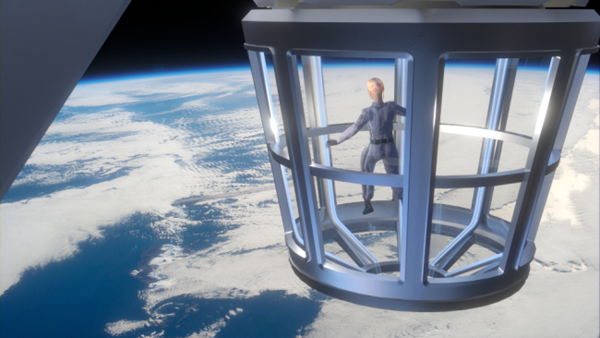
Axiom Space’s goal is to create the world’s first commercial space station. In the meantime, they’ve inked a deal to send a crew of private citizens to the ISS aboard SpaceX’s Crew Dragon capsule in October 2021.
Axiom’s initial crewed mission, dubbed Ax1, should send three paying astronauts to the ISS. Each ticket reportedly costs $55 million. And while it might seem like there’s a small pool of potential ticket buyers at that rate, in the U.S. alone, roughly 75,000 American households have that much money. Axiom also figures it’s just getting started selling tickets to space. In the near future, the company says it will send three crews a year to the ISS.
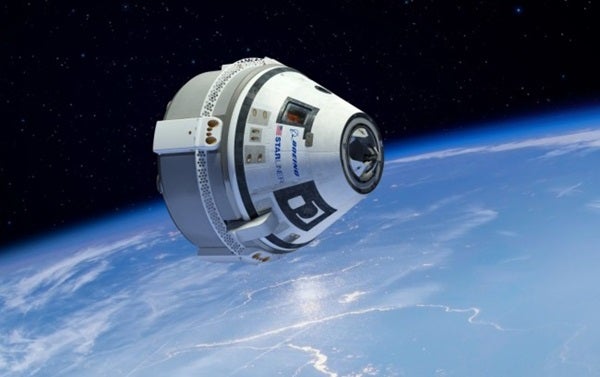
Back in 2014, NASA selected two companies — SpaceX and Boeing — to receive multibillion-dollar contracts to build spacecraft that could ferry astronauts to the ISS. SpaceX made good on the first crewed flight of its Commercial Crew Program contract earlier this year. Meanwhile, Boeing has yet to get its Starliner spacecraft safely to the ISS and back. Their first test flight reached orbit but failed to make the space station, and a NASA review outlined numerous necessary fixes.
Boeing will attempt another uncrewed test flight next year. And if all goes well, they could fly to the ISS by late 2021.
But once Boeing is flying to and from the ISS, the iconic aerospace company is also technically allowed to fly private passengers to the space station. They’ve been quiet on this option, but NASA has said they’d accommodate passengers at a rate of $35,000 per night.
Boeing has also hired a corporate test pilot astronaut, Christopher Ferguson. He’s been training alongside NASA’s astronauts and will be among the first to fly on Starliner. He might not count as a space tourist, but Ferguson will ultimately be part of an entirely new group of professional astronauts that work for private companies, not national space agencies.
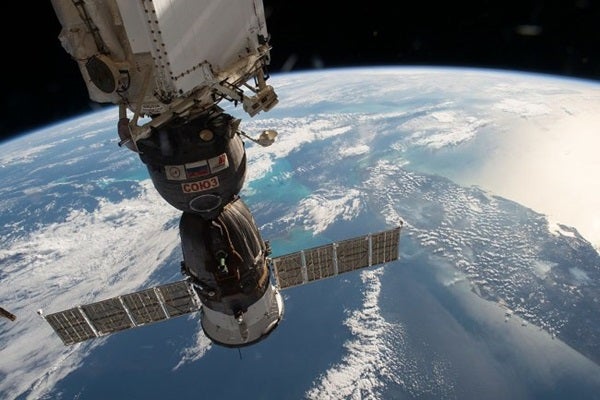
Space Adventures
Space Adventures is an American company that offers private spaceflights to the ISS and, eventually, the moon. Since their founding in 1998, the company has sold a number of other spaceflight related experiences, like simulated zero-gravity airplane flights. And unlike their competitors, Space Adventures has sent space tourists into orbit, too. They’ve been responsible for over half a dozen paid trips to the ISS that made use of Russian spacecraft.
Most recently, they booked a launch to the space station on Russia’s veteran Soyuz spacecraft, which is set for December 2021. The mission, dubbed Soyuz MS-20, will fly with a lone cosmonaut and two Space Adventures tourists.
Space Adventures has arranged another path to get paying customers into space, too. They recently announced a deal with SpaceX that will put four space tourists in a SpaceX capsule and send them into orbit around Earth. How much will it cost? For now, both companies are keeping the cost of these tickets private. But those who do make the trip should get an excellent show. The mission will orbit at several times the height of the ISS.
Unfortunately, few of us have enough disposable income to fund a trip beyond Earth’s atmosphere. But with at least a half dozen ways for the wealthy to purchase a ticket into space next year, the hope is that the cost will continue to decline. And if that happens, you might be closer than you think to regularly having your rocket pass checked by the TSA.

The metal chunk that burst through a Florida home came from the ISS

The search is on for extraterrestrial life on worlds like Enceladus

The clever prince Ulugh Beg built — and used — an ingenious observatory in the 15th century

An updated list of space missions: Current and upcoming voyages

The largest digital camera ever made for astronomy is done

NASA seeks faster, cheaper options to return Mars samples to Earth

NASA bids farewell to the Ingenuity Mars Helicopter with new photos

These are the clever messages headed to Jupiter aboard NASA’s Europa Clipper
Nasa’s snake-like eels robot impresses in early testssssssss.
- Supply Chain
POPULAR TOPICS
Space tourism – techpreneurs lead the new space race.
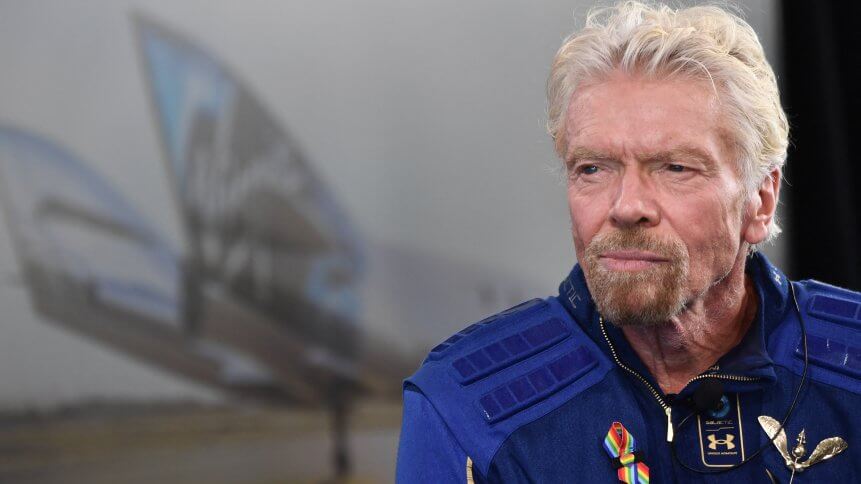
Sir Richard Branson speaks after he flew into space aboard a Virgin Galactic vessel, a voyage he described as the “experience of a lifetime” — and one he hopes will usher in an era of lucrative space tourism. (Photo by Patrick T. FALLON / AFP)
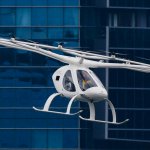
Will flying vehicles shake up industries like they did travel?
Commercial space tourism is officially jetting off after Richard Branson, CEO of Virgin Group completed the first space travel trip abroad the Virgin Galactic, a supersonic space aircraft developed by Virgin Galactic. Richard beat Amazon billionaire Jeff Bezos , who will also be traveling to suborbital space in a week’s time.
Jeff will be making the trip onboard New Shepard, a reusable spacecraft designed by Blue Origin , a company he founded. The Federal Aviation Administration has approved the license for the company to carry humans into space on its maiden voyage on July 20, 2021.
Interestingly, both of these digital entrepreneurs are not the first space tourists. In 2001, US millionaire Dennis Tito made a trip to the International Space Station abroad a Russian Soyuz rocket, on a US$20 million ticket. Today, Virgin Galactic is making commercial travel possible for the ‘low’ price of US$250,000 — with a growing waiting list of millionaires who want to make the trip.
With Virgin Galactic planning to kick off commercial space tourism next year, the global space tourist market is projected to reach a revised size of US$1.7 billion by 2027. Suborbital tourism, like the one offered by Virgin Galactic, is projected to record 15.6% CAGR and reach US$1.5 billion by end-2027. Speaking to CNBC before his trip, Richard said, “There’s room for 20 space companies to take people up there. The more spaceships we can build, the more we can bring the price down and the more we’ll be able to satisfy demand and that will happen over the years to come.”
The Virgin Galactic SpaceShipTwo space plane Unity returns to earth after the mothership separated, at Spaceport America.. (Photo by Patrick T. FALLON / AFP)
Virgin Galactic predicts that around two million people can experience spaceflights that are priced between US$250,000 to US$500,000. Apart from Virgin Galactic and Blue Origin, other companies in the US that are joining the space tourism burgeoning trade include Elon Musk’s SpaceX . Compared to the other two, SpaceX commercial trips are expected to be longer in space and cost a few million dollars.
Interestingly, American companies are not the only ones looking at the commercial space race . Japanese spacecraft developer PD AeroSpace is developing an airport on an island in Okinawa for space tourism by 2025. China is also showing interest in space tourism after successful space missions last year, while Europe is also looking to follow suit.
A cybersecurity threat?
While the momentum for space tourism grows, there are still concerns about the entire idea of space travel. Many are still coming to terms with the idea of flying cars and drones being a mode of travel in the near future. And with space travel also becoming mainstream, many critics feel the funds can be used to improve many current issues being faced by humanity — while others feel the industry may only widen the gap between the super rich.
Another aspect that is also concerning is the security of such flights. Virgin Atlantic was initially launched in 2004 but suffered multiple delays and failures before eventually launching a few days ago. Perhaps modern technologies like artificial intelligence (AI) have improved the operation for such flights with real-time data and analytics providing better information.
For example Starlink, the satellite internet constellation launched by SpaceX, will connect with Google’s cloud infrastructure, enabling the satellite broadband network to deliver low-latency applications, data, and other cloud services to network edge deployments. Prior to this, SpaceX signed a similar agreement to connect its Starlink constellation to Microsoft’s Azure cloud .
At the same time, while most of these technologies would be patented and well secured, there is no guarantee that these companies will be targeted by cybercriminals . Be it cyber espionage or ransomware , data in these companies are of high value. Cybercriminals continue to find ways to infiltrate successful organizations. And with space tourism growing rapidly with lots of funds, they’re definitely key targets for any cybercriminal.
YOU MIGHT LIKE
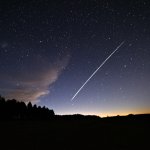
DIGITAL TRANSFORMATION
What is Elon Musk up to with SpaceX’s Starlink?
Having said that though, these companies are also aware of the threats that come along with their success and would have added sufficient security measures to ensure all their data, especially the data privacy of potential passengers is well secured and protected.
Space tourism will only continue to gain momentum as more flights take place in the years to come. As technology improves, the space journey itself will be improving. For now, the race to the stars seems to be on its way and it shows no signs of slowing down.

7 March 2024

6 March 2024
- Search Please fill out this field.
- Manage Your Subscription
- Give a Gift Subscription
- Sweepstakes
- Space Travel + Astronomy
This Company Will Take You to the Edge of Space in a Hot Air Balloon for $50,000
It's the most affordable form of space travel yet.
:max_bytes(150000):strip_icc():format(webp)/Stacey-Leasca-2000-631fabdcfe624115bea0ce8e25fdec96.jpg)
World View , a stratospheric ballooning company, announced an expansion of services that includes its new edge-of-space tourism experience, which takes place inside a high-tech hot air balloon.
The edge-of-space flights will lift eight participants and two World View crew members in a zero-pressure stratospheric balloon and pressurized space capsule to 100,000 feet, or nearly 23 miles into the stratosphere. In total, the experience will last for anywhere between six and 12 hours.
The journey begins at World View's spaceports located across the globe. Guests will arrive ahead of their flight for a five-day experience that includes excursions so they can immerse themselves in the surrounding area. The spaceport locations include the Grand Canyon in the United States, the Great Barrier Reef in Queensland Australia, the Serengeti in Kenya, an Aurora Borealis spot in Norway, Amazonia in Brazil, the Giza Pyramids in Egypt, and the Great Wall of China in Mongolia.
Now, here's the best part. The flights are priced at $50,000 per person. Though still quite a bit more expensive than a regular plane ride, it's a marked discount from other space tourism operations, some of which can run for nearly $500,000 per seat .
"There are some really great space tourism companies that are building some amazing experiences to take their customers into space. We celebrate their accomplishments in pushing the space tourism industry forward," Ryan Hartman, World View president and CEO, told Travel + Leisure . "We've opted to build a different type of space tourism experience, one that will allow more humans to view the curvature of Earth, the darkness of space, and the fragility of our planet. In order to increase humanity's access to space tourism , we felt it was important to price our experience to be more affordable to more people."
But, affordability isn't the only goal. It's also about accessibility for all.
"We wanted to make sure that it was accessible for people of all physical abilities. We've designed the experience to feature a very gentle ascent and descent that might be comparable (or even gentler) than a takeoff and landing of a commercial airplane," Hartman added. "In addition to increasing affordability and accessibility, we also want to maximize the value of the experience. This comes in two forms: time and place. From a time perspective, we want to make sure you have as much time as possible at apogee to truly appreciate this awe-inspiring vantage point. You'll spend over six hours hovering 100,000 feet above Earth, giving you ample time to rediscover the beauty and fragility of our planet."
Those interested in joining the flight can put in a deposit starting today with just $500. World View's first commercial flights are expected to begin in early 2024 with the non-profit Space for Humanity, which already secured the inaugural commercial flight.
"We are very excited about securing World View's first commercial capsule," Rachel Lyons, executive director of Space for Humanity, said in the statement. "Our mission is to expand access to space to all and in doing so, support the transformation of our world's most ambitious leaders so they can use their experience in space to create positive change here on Earth. This is a groundbreaking time for space tourism and we're looking forward to giving more people the opportunity to experience it for themselves."
Check out more about the experience and book your spot here .
Watch CBS News
Florida company offers luxury trip to space for $125,000 price tag
By Khristopher J. Brooks
June 23, 2021 / 6:27 PM EDT / MoneyWatch
For a mere $125,000, you, too, can purchase a trip to ascend some 20 miles into Earth's upper atmosphere on board a luxury space balloon.
Space Perspective, a human space flight company in Florida, on Wednesday began selling tickets for its inaugural voyage way high into the sky at $125,000 a pop. The trip is scheduled for late 2024 aboard the Spaceship Neptune, a hot air balloon-style craft lifted by hydrogen. Anyone interested in the trip must pay a $1,000 deposit.
The company said it plans to send eight passengers on a "leisurely" ascension into space from a launch pad at the Kennedy Space Center in Florida, a excursion in which they will reportedly travel up to 20 miles above the Earth's surface for a "profoundly life-changing" experience.
"Throughout the six-hour journey, all guests will enjoy the best reclining seats in the house to soak in the 450-mile, 360-degree view, an open call on dress, champagne, and a bathroom," Space Perspective said in a press release.
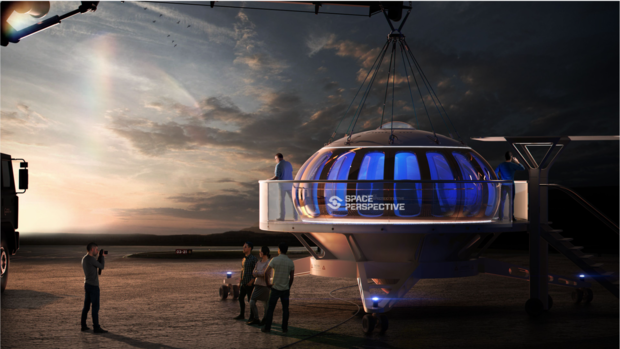
While civilians have flown as guests or paying passengers aboard U.S. and Russian spacecraft in the past, those trips were government-sponsored missions, piloted by professional astronauts. What Space Perspective and other spaceflight companies are offering is notably different, companies have said.
Measuring at 700 feet tall, Spaceship Neptune's capsule will feature plush seating, 360-degree panoramic windows, WiFi access and other amenities. Once inflated, the space balloon that lifts the capsule will be "the size of a football stadium," Space Perspective said.
There will be a captain on board and passengers won't require specialized training before liftoff. At its highest altitude, Spaceship Neptune will allow passengers to see the curvature of Earth against a backdrop of the sun, the company said.
Aerospace entrepreneurs Jane Poynter and Taber MacCallum founded Space Perspective in 2019 with the stated goal of helping more people see Earth from its upper atmosphere. The company said it completed a successful test flight of the space balloon in Titusville, Florida, earlier this month.
Poynter and MacCallum said during a press conference last year that they also planned to send research teams "to the edge of space" using Spaceship Neptune.
Poynter and MacCallum are one of many players in the emerging space tourism industry and, so far, their spaceflight package is the relative bargain of the bunch. Jeff Bezos' aerospace company Blue Origin, auctioned off one seat aboard its New Shepard spacecraft earlier this month for a galactic sum of $28 million . Bezos himself also plans to board the New Shepard on its first crewed flight .
"I want to go on this flight because it's the thing I've wanted to do all my life," Bezos said in an Instagram post earlier this month . "It's an adventure. It's a big deal for me."
Richard Branson's Virgin Galactic is expected to begin trips to space early next year. Tickets are more than $250,000 each and Branson's company has reportedly sold more than 600 seats. Virgin Galactic in March revealed the VSS Imagine, the first in a growing fleet of spacecrafts it plans to use for space tourism.
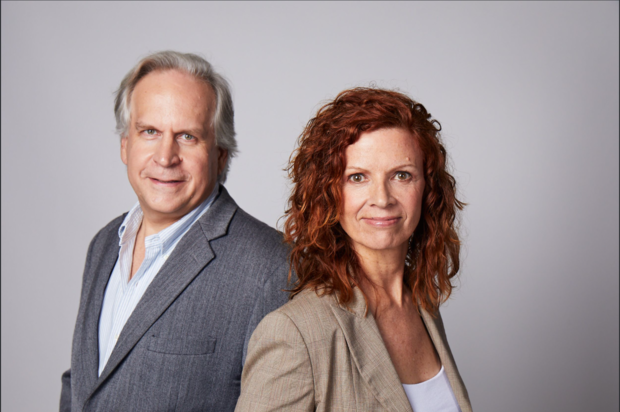
Meanwhile, Elon Musk's SpaceX has already sold tickets for a private, 10-day space ride to the International Space Station. That trip is slated to launch later this year. Tickets sold for $55 million each.
A 2019 UBS analysis projected space tourism will be valued at $3 billion by 2030. The larger space industry is expected to be worth $805 billion by that same year, UBS said.

Khristopher J. Brooks is a reporter for CBS MoneyWatch. He previously worked as a reporter for the Omaha World-Herald, Newsday and the Florida Times-Union. His reporting primarily focuses on the U.S. housing market, the business of sports and bankruptcy.
More from CBS News
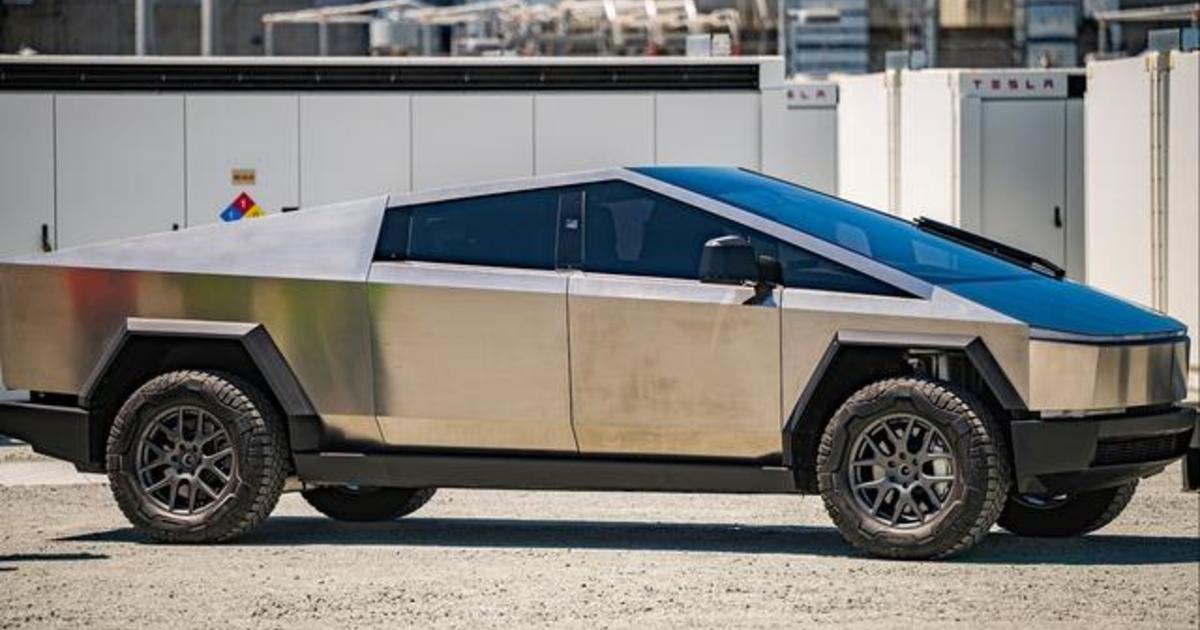
Tesla recalls nearly 4,000 Cybertrucks

CDs vs. high-yield savings accounts: What to consider before the Fed cuts rates

3 reasons long-term care insurance is better than paying out of pocket
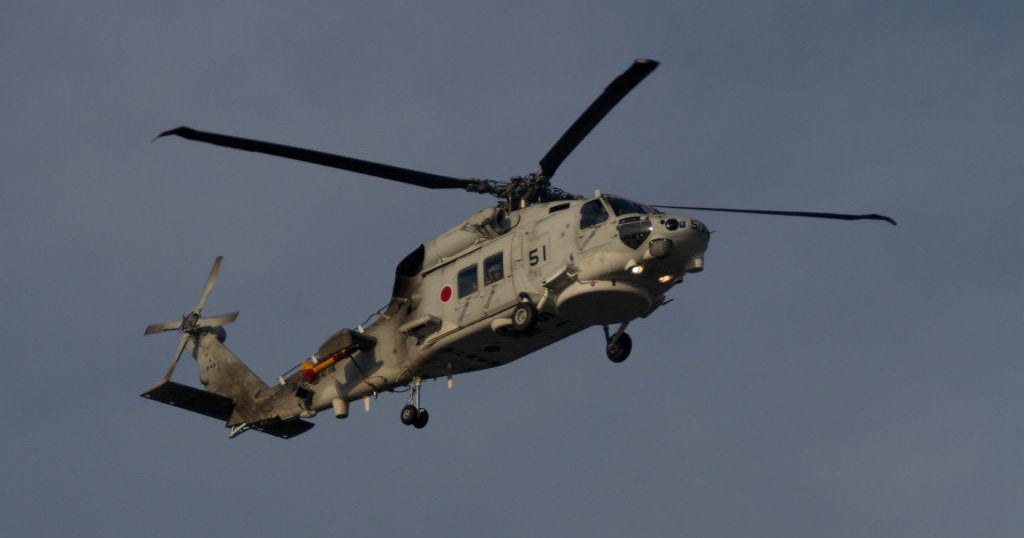
One dead, 7 missing after 2 Japanese navy choppers crash in Pacific
The jaw-droppingly high, out-of-this-world carbon footprint of space tourism
Share this idea.
- Click to share on Facebook (Opens in new window)
- Click to share on Twitter (Opens in new window)
- Click to share on LinkedIn (Opens in new window)
- Click to share on Reddit (Opens in new window)
- Click to share on Pocket (Opens in new window)
- Click to share on WhatsApp (Opens in new window)
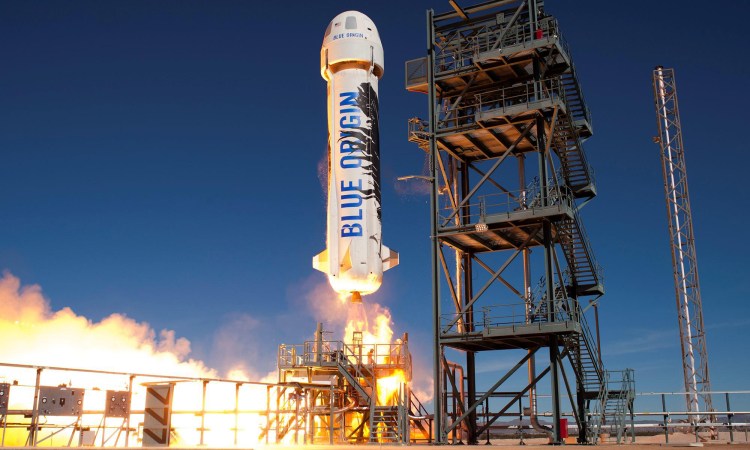
The commercial race to get tourists to space is heating up between Virgin Group founder Sir Richard Branson and former Amazon CEO Jeff Bezos. On July 11, Branson ascended 80 km (49 miles) to reach the edge of space in his piloted Virgin Galactic VSS Unity spaceplane, while Bezos’ autonomous Blue Origin rocket launched today on July 20 , coinciding with the anniversary of the Apollo 11 Moon landing. Although Bezos launched later than Branson, he set out to reach higher altitudes — about 120 km, or 74 miles .
The launch demonstrates a new type of offering to very wealthy tourists: The opportunity to truly reach outer space. Tour packages will provide passengers with a brief 10-minute frolic in zero gravity and glimpses of Earth from space. Not to be outdone, later in 2021, Elon Musk’s SpaceX will provide four to five days of orbital travel with its Crew Dragon capsule.
What are the environmental consequences of a space tourism industry likely to be? Bezos boasts that his Blue Origin rockets are greener than Branson’s VSS Unity. The Blue Engine 3 (BE-3) launched Bezos, his brother and two guests into space using liquid hydrogen and liquid oxygen propellants.
VSS Unity, on the other hand, used a hybrid propellant comprised of a solid carbon-based fuel, hydroxyl-terminated polybutadiene (HTPB), and nitrous oxide (or laughing gas), while the SpaceX Falcon series of reusable rockets will propel the Crew Dragon into orbit using liquid kerosene and liquid oxygen.
Burning these propellants provides the energy needed to launch rockets into space — but it simultaneously generates greenhouse gases and air pollutants. Large quantities of water vapor are also produced by burning the BE-3 propellant, while combustion of both the VSS Unity and Falcon fuels produces CO2, soot and some water vapor. The nitrogen-based oxidant used by VSS Unity also generates nitrogen oxides, compounds that contribute to air pollution closer to Earth. Roughly two-thirds of this propellant exhaust is released into the stratosphere (12 km-50 km) and mesosphere (50 km-85 km), where it can persist for at least two to three years.
The very high temperatures during launch and re-entry (which is when the protective heat shields of the returning crafts burn up) also convert stable nitrogen in the air into reactive nitrogen oxides. These gases and particles have many negative effects on the atmosphere. In the stratosphere, nitrogen oxides and chemicals formed from the breakdown of water vapor convert ozone into oxygen and deplete the ozone layer which guards life on Earth against harmful UV radiation.
Water vapor also produces stratospheric clouds that provide a surface for this reaction to occur at a faster pace than it otherwise would.
Space tourism and climate change
What’s more, CO2 exhaust emissions and soot trap heat in the atmosphere, contributing to global warming. Cooling of the atmosphere can also occur, as clouds formed from the emitted water vapor reflect incoming sunlight back to space. A depleted ozone layer would also absorb less incoming sunlight, and so heat the stratosphere less.
Figuring out the overall effect of rocket launches on the atmosphere will require detailed modeling, in order to account for these complex processes and the persistence of these pollutants in the upper atmosphere. Equally important is a clear understanding of how the space tourism industry will develop.
Virgin Galactic anticipates it will offer 400 spaceflights each year to the privileged few who can afford them. Blue Origin and SpaceX have yet to announce their plans. But globally, rocket launches wouldn’t need to increase by much from the current 100 or so performed each year to induce harmful effects that are competitive with other sources , like ozone-depleting chlorofluorocarbons (CFCs), and CO2 from aircraft.
During launch, rockets can emit between 4 and 10 times more nitrogen oxides than Drax , the largest thermal power plant in the UK, over the same time period. CO2 emissions for the four or so tourists on a space flight will be between 50 and 100 times more than the one to three tonnes of emissions that are generated per passenger on a long-haul airplane flight.
This article is republished from The Conversation under a Creative Commons license. Read the original article .
What are the origins of spaceflight? It all started with science fiction. Watch the full Talk to learn more:
About the author
Eloise Marais is an Associate Professor in Physical Geography at UCL. Marais leads a research group that addresses long-standing uncertainties about the chemical composition of the atmosphere and determines the influence of humans on the environment, air quality and climate.
- carbon dioxide
- carbon emissions
- climate change
- society and culture
- space tourism
TED Talk of the Day

How to make radical climate action the new normal

6 ways to give that aren't about money

A smart way to handle anxiety -- courtesy of soccer great Lionel Messi

How do top athletes get into the zone? By getting uncomfortable

6 things people do around the world to slow down

Creating a contract -- yes, a contract! -- could help you get what you want from your relationship

Could your life story use an update? Here’s how to do it

6 tips to help you be a better human now

How to have better conversations on social media (really!)

Let’s stop calling them “soft skills” -- and call them “real skills” instead

3 strategies for effective leadership, from a former astronaut

There’s a know-it-all at every job — here’s how to deal

The 7 types of people you need in your life to be resilient
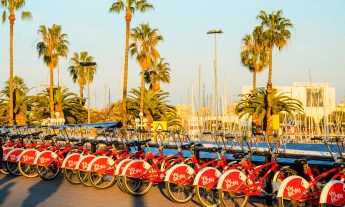
These 8 cities around the world are putting their focus on biking and walking -- not cars

Net-zero emissions is a great goal for companies to set -- but really hard to reach. Here's why
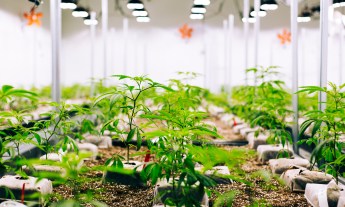
What's the carbon footprint of cannabis? Surprisingly high

Most US homes are energy vampires -- here's how we need to rethink housing from the ground up

IMAGES
VIDEO
COMMENTS
Virgin Galactic is launching a new space age, where all are invited along for the ride.
Virgin Galactic's VSS Unity, the reusable rocket-powered space plane carrying the company's first crew of tourists to space, successfully launched and landed on Thursday. The mission, known as ...
CNN —. Virgin Galactic — the space tourism company founded by British billionaire Richard Branson — finally launched its first space tourists to the edge of the cosmos, a major step toward ...
About 800 tickets for trips on the aircraft have been sold at a cost of up to $450,000 per seat. Photograph: Joe Skipper/Reuters ... Virgin Galactic completes first commercial flight into space.
Michael Cappetta. Published on June 16, 2023. Virgin Galactic has announced plans for two upcoming space flights — both of which will be commercial flights. This first mission — the "Galactic ...
Thursday's flight was the Unity rocketplane's first trip to space since Virgin founder Richard Branson, Masucci, Moses and three other company crewmates completed a dramatic test flight on July 11 ...
Boeing's Orbital Flight Test-2 (OFT-2) is Starliners second uncrewed flight test to the International Space Station as part of NASA's Commercial Crew Program. OFT-2 serves as an end-to-end test of ...
Virgin Galactic aims to launch its commercial space tourism service in late June. Shares of the company spiked more than 40% in extended trading Thursday. Virgin Galactic on Thursday said the ...
Virgin Galactic announced on November 24 that Keisha Schahaff, a health and energy coach in Antigua, won two seats in a sweepstakes that raised $1.7 million for Space for Humanity, a Denver-based ...
1:30. The dawn of space tourism may be fast approaching as billionaire Richard Branson's company Virgin Galactic is preparing to make its first commercial flight to the final frontier by the end ...
Space Perspective: "Hot Air Balloon" to Stratosphere. Price: $125,000. Flight altitude: 30 kilometers. What you'll get: A relaxing six-hour ride to the stratosphere in a balloon-borne ...
NASA has signed agreements with three U.S. companies to develop designs of space stations and other commercial destinations in space. The agreements are part of the agency's efforts to enable a robust, American-led commercial economy in low-Earth orbit. The total estimated award amount for all three funded Space Act Agreements is $415.6 million.
Isaacman — who will become the third billionaire to self-fund a trip to space in the past three months and the first to buy a trip to orbit on a SpaceX capsule — is billing this mission as one ...
The Commercial Space Age Is Here. Private space travel is just the beginning. Summary. In May of 2020, SpaceX made history as the first private company to send humans into space. This marks not ...
2021 has been a busy year for private space tourism: overall, more than 15 civilians took a trip to space during this year. In this article, you will learn more about the space tourism industry, its history, and the companies that are most likely to make you a space tourist. Contents. What is space tourism? Brief history of space tourism
Axiom Space's goal is to create the world's first commercial space station. In the meantime, they've inked a deal to send a crew of private citizens to the ISS aboard SpaceX's Crew Dragon ...
Commercial space tourism is officially jetting off after Richard Branson, CEO of Virgin Group completed the first space travel trip abroad the Virgin Galactic, a supersonic space aircraft developed by Virgin Galactic. Richard beat Amazon billionaire Jeff Bezos, who will also be traveling to suborbital space in a week's time.. Jeff will be making the trip onboard New Shepard, a reusable ...
A SpaceX Falcon 9 rocket launches the Axiom-1 mission with a commercial crew of four headed to the International Space Station, April 8, 2022. SpaceX/CBS News. The automated climb to space ...
In space, they currently accept inquiries for trips to both the space station and around the moon. The price depends on who provides the launch and how long you want to stay. 2. Virgin Galactic. ... Like SpaceX, most people characterize Boeing as a commercial launch company, rather than a space tourism company. But also like SpaceX, we may see ...
The flights are priced at $50,000 per person. Though still quite a bit more expensive than a regular plane ride, it's a marked discount from other space tourism operations, some of which can run ...
Commercial space travel gaining foothold in tourism industry 02:40. For a mere $125,000, you, too, can purchase a trip to ascend some 20 miles into Earth's upper atmosphere on board a luxury space ...
The commercial race to get tourists to space is heating up between Virgin Group founder Sir Richard Branson and former Amazon CEO Jeff Bezos. On July 11, Branson ascended 80 km (49 miles) to reach the edge of space in his piloted Virgin Galactic VSS Unity spaceplane, while Bezos' autonomous Blue Origin rocket launched today on July 20, coinciding with the anniversary of the Apollo 11 Moon ...